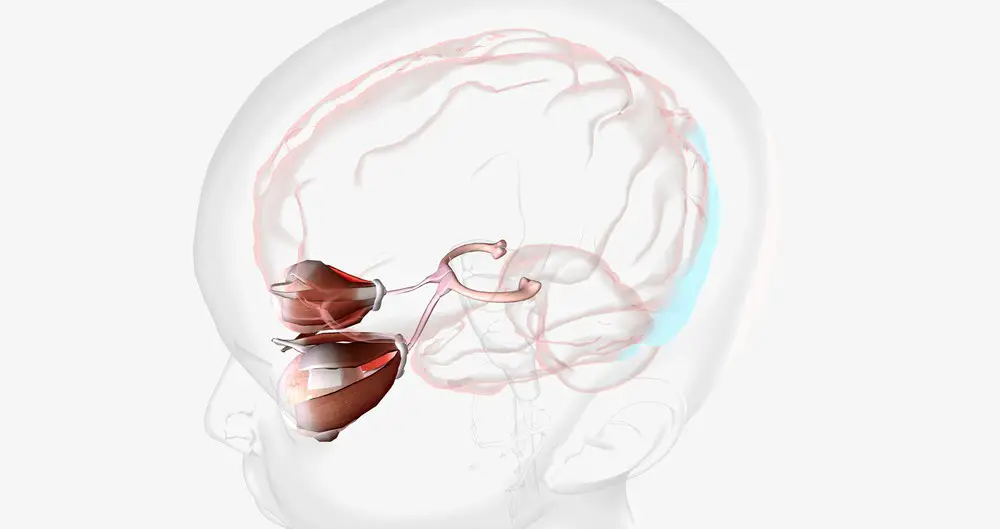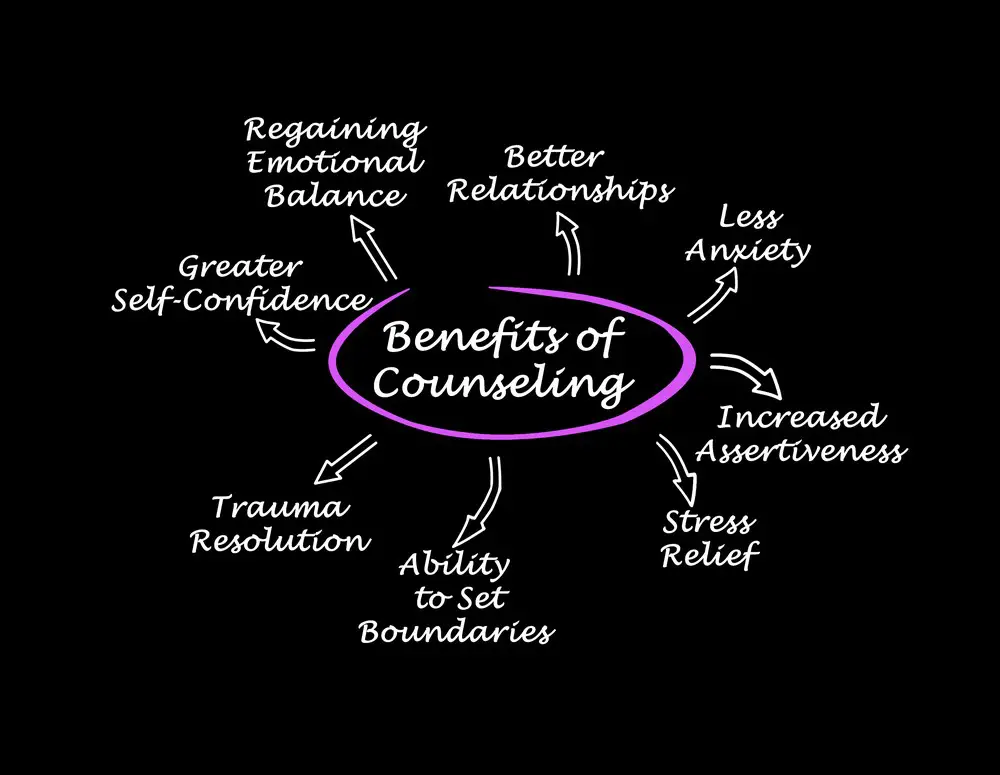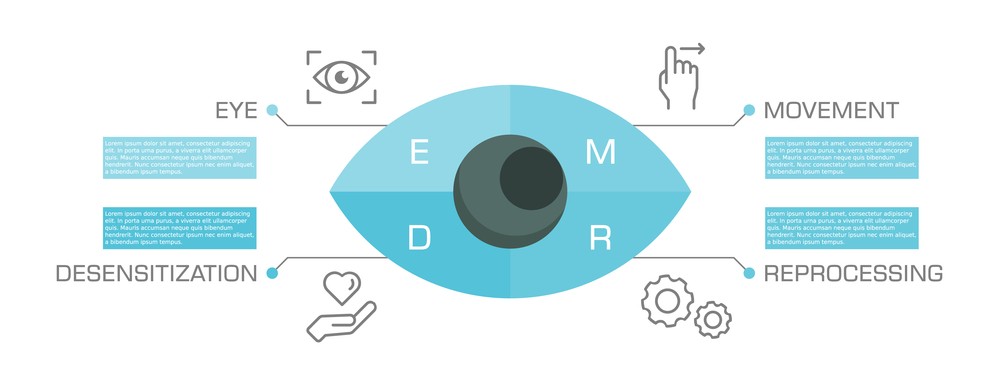As a BetterHelp affiliate, we receive compensation from BetterHelp if you purchase products or services through the links provided
Eye Movement Desensitization and Reprocessing (EMDR) is a psychotherapy technique used to treat various mental health disorders, including post-traumatic stress disorder (PTSD), anxiety, and depression. The therapy focuses on distressing memories while stimulating the brain through eye movements, tapping, or auditory tones. While EMDR has become an increasingly popular treatment option, it is essential to be aware of its potential side effects.
Though EMDR therapy has proven effective for many individuals, it may not suit everyone. As with any therapy, EMDR may produce side effects, including heightened emotional sensitivity, vivid dreams, and temporary distress during treatment sessions. Identifying these side effects can help patients and their therapists make informed decisions when incorporating EMDR into their treatment plans.
Key Takeaways
- EMDR therapy helps treat PTSD, anxiety, and depression through brain stimulation
- Emotional sensitivity, vivid dreams, and temporary distress are potential side effects.
- Recognizing side effects is important for informed treatment decisions

EMDR Therapy Overview
EMDR, or Eye Movement Desensitization and Reprocessing, is a unique therapy that has garnered quite a reputation in recent years. As a cutting-edge approach to psychological healing, EMDR therapy was initially developed to address traumatic events and post-traumatic stress disorder (PTSD). As curious as it may sound, this therapy revolves around rapid eye movements that prompt the brain to reprocess distressing memories and emotions.
Diving deeper, EMDR therapy relies on the premise that the mind has an innate ability to heal itself, much like our bodies do. When properly conducted, EMDR therapy is designed to stimulate the brain’s self-healing capacity by facilitating lateral eye movements in the client. Doing so removes the emotional charge associated with past traumatic experiences, ultimately leading to a more balanced mental state.
To further demystify EMDR, it’s crucial to understand its eight-phase approach. The first phase, for instance, is about history-taking and gathering information to identify specific targets for the therapy. This phase lays the groundwork for all that follows. Meanwhile, the other phases center around preparing the client, assessing the target memory, implementing bilateral stimulation, and ensuring the client’s emotional well-being.
Intriguingly, the effectiveness of EMDR therapy has been supported by numerous research studies, showing its capacity to provide relief not only to those with PTSD but also to individuals suffering from anxiety, depression, and more. With its unconventional approach to healing, EMDR can often lead to faster results than traditional talk therapy.
However, despite its benefits and success stories, it’s relevant to mention that EMDR is not without potential side effects. Like any therapy, it may present certain drawbacks, including temporary emotional distress and heightened self-awareness. That said, most people tend to agree that the benefits far outweigh the risks, and EMDR therapy remains a promising approach that has changed countless lives for the better.
So there you have it—an insightful look into EMDR therapy. A unique and innovative approach that’s changing the way we heal our minds, allowing individuals to move forward and live healthier, more fulfilling lives.
 EMDR Treatment Process
EMDR Treatment Process
EMDR, or Eye Movement Desensitization and Reprocessing, has gained traction as a reputable and efficacious therapy for individuals grappling with trauma and other distressing experiences. The cornerstone of this method lies in its unique treatment process, which encompasses eight distinct phases. Let’s break it down step by step.
Embarking on the EMDR journey begins with thorough preparation. During this phase, the therapist cultivates rapport with the client, elucidates the EMDR protocol, and provides them with effective coping mechanisms for managing emotional distress.
Following preparation, the assessment phase unfolds. Here, the therapist delves into the client’s traumatic experience, pinpointing the crux of the issue and identifying specific targets for EMDR processing. This phase sets the stage for adaptive information processing, a critical aspect of EMDR.
Upon establishing the groundwork, the desensitization phase ensues. In this phase, the therapist facilitates the client’s confrontation of disturbing memories and emotions while simultaneously implementing bilateral stimulation (eye movements, tactile or auditory cues). The objective? To attenuate the adverse impact of traumatic experiences.
Enter the installation phase to strengthen and imbue positive experiences, emotions, and thoughts, replacing the once-debilitating recollections. A noticeable transformation occurs during this phase, empowering the client to forge ahead with renewed resilience.
Next up, a thorough body scan is conducted. The therapist encourages the client to tune into their physical sensations, seeking any residual tension or discomfort connected to the distressing memory. If any persist, further reprocessing may be warranted to foster a sense of serenity.
The reevaluation phase is all about ensuring progress while leaving no stone unturned. The therapist reviews previously processed memories and gauges their impact on the individual’s present-day life. Adjustments and tweaks may be made here to maximize therapeutic gains.
Lastly, closure provides the client a safe space to recenter and recuperate. They are reminded of the coping strategies acquired in the initial preparation phase, ensuring they are well-equipped to manage residual emotions following therapy.
In a nutshell, EMDR’s treatment process is a meticulously crafted therapeutic dance that delicately weaves through each phase, all while keeping the client’s well-being front and center. Individuals can transcend their traumatic past with each step, paving the way for a brighter, more liberated future.
Conditions Treated with EMDR
EMDR, or Eye Movement Desensitization and Reprocessing, is a versatile therapeutic approach that effectively treats various mental health conditions. Its core focus is to assist individuals in overcoming the debilitating effects of traumatic events, offering relief to countless people. While initially developed for post-traumatic stress disorder (PTSD), its benefits have been extended to various mental health conditions.
Individuals grappling with anxiety disorders can also benefit from the healing power of EMDR. This one-of-a-kind treatment can be a real game-changer, be it the overwhelming stress from a fast-paced life or the nerve-wracking panic attacks that come with panic disorder. EMDR has proven to be particularly helpful for those who’ve experienced trauma or abuse, allowing them to face their fears and regain control over their lives.
In addition to PTSD and anxiety disorders, EMDR has been known to aid in treating depression. By addressing the root causes of an individual’s melancholy, the therapy can shed light on their buried emotions and help navigate them toward a brighter, happier future.
EMDR has also been utilized in treating eating disorders, offering solace to those who struggle with the seemingly unbreakable grip on their relationship with food. Its unique approach can help unravel the psychological knots that often fuel disordered eating patterns and aid in rewriting one’s self-image.
Therapists have increasingly turned to EMDR to address phobias and dissociative disorders. The technique can help alleviate the overwhelming sensations tied to specific situations or objects and mend the fractured sense of self that often accompanies dissociative disorders.
But the benefits of EMDR don’t just stop there. In some cases, it has been utilized to treat the emotional distress connected to chronic pain and improve cognition among individuals. Although not a comprehensive solution, EMDR has shown promising results in reducing pain-related psychological distress and bolstering cognitive capacities when other avenues may have fallen short.
EMDR is a valuable therapeutic tool in the arsenal against various mental health conditions. From PTSD to anxiety, trauma to depression, and beyond, this innovative therapy continues to shine a ray of hope for those searching for emotional healing.
 EMDR Effectiveness and Research
EMDR Effectiveness and Research
Eye Movement Desensitization and Reprocessing (EMDR) has gained much attention, and its effectiveness has been widely explored in various research studies. Francine Shapiro, the founder of EMDR, believed in its potential to treat various mental health issues, particularly for those battling trauma scars.
The World Health Organization recognizes EMDR as an effective treatment for trauma and other stress-related disorders. It stands alongside Cognitive Behavioral Therapy (CBT) as one of the leading treatments for addressing such conditions. The Department of Veterans Affairs also supports using EMDR to help veterans cope with post-traumatic stress disorder (PTSD).
Notable research studies, such as randomized controlled trials, have showcased positive outcomes for EMDR therapy. The findings indicate its ability to reduce symptoms of PTSD, anxiety, and depression. As a result, EMDR is gaining respect and trust within the mental health community.
Though the hype surrounding EMDR continues to grow, there’s still much to uncover about its overall effectiveness and the mechanisms behind it. Research studies consistently delve deeper into understanding the nuances of EMDR, hoping to provide more solid evidence and shed light on how this therapy aids those in need.
In summary, EMDR has gathered supportive data and endorsements from respected organizations, proving its worth in mental health treatments. As research advances, we eagerly anticipate further revelations to help refine and optimize this promising therapy.
Side Effects of EMDR
EMDR, or Eye Movement Desensitization and Reprocessing, is a powerful therapeutic technique that has helped countless individuals deal with traumatic experiences. However, as with any health intervention, there could be some side effects that patients might experience.
At times, individuals undergoing EMDR might feel discomfort as it brings up intense memories and emotions. Some patients have even reported lightheadedness during sessions, which usually subsides quickly. Even though these reactions can be unsettling, it’s essential to remember that they are a part of the healing process.
Another curious effect that may arise during EMDR therapy is vivid or intense dreams. It’s not uncommon for patients to experience unusually vivid or emotionally charged dreams while undergoing treatment. This can be attributed to the therapy working deeply with a person’s unconscious mind and memory. Although these dreams can be startling, they generally fade as the therapy progresses.
Emotional fluctuations are also a common side effect of EMDR. When working through traumatic experiences, one might feel agitated or overwhelmed on an emotional roller coaster. However, there’s a silver lining – these emotional fluctuations may indicate that the therapy is working.
In rare cases, some individuals may experience more severe side effects, such as increased anxiety or depression. If this occurs, it’s crucial to discuss these feelings with the therapist, who can make necessary adjustments to the treatment plan.
In conclusion, while some side effects may be associated with EMDR, it’s important to remember that they’re generally a natural part of the healing journey. By understanding and acknowledging these side effects, patients can be better equipped to face and overcome their past traumas.
EMDR and Children
Children possess their own unique set of challenges when it comes to healing from past traumas. Fortunately, EMDR therapy has proven effective in addressing children and adolescents’ psychological issues.
Young minds are known to be resilient, but they sometimes struggle to cope with traumatic events. In these situations, EMDR swoops in like a life vest, offering hope to youngsters who feel overwhelmed. This evidence-based treatment has shown promising results, allowing these young individuals to regain balance and control gradually.
The EMDR process, in all its therapeutic glory, gently navigates the minds of children as they delve into the roots of their sorrow or pain. Subsequently, the therapy enables them to reprocess these distressing memories, breaking free from the chains that once held them captive. EMDR can be so transformative that it turns a child’s once tender wound into nothing more than a distant memory.
While adults and children share the burden of trauma, the impact on a child’s development can be even more profound. The good news is that EMDR can potentially mend young people’s hearts and minds as it whisks away the pain. Moreover, it’s essential not to forget the ripple effect on their future relationships, ability to cope with stress, and overall well-being.
In conclusion, EMDR therapy for children and adolescents is a true testament to the power of healing, resilience, and the indomitable nature of the human spirit. Tapping into the strength of these young ones aids them in overcoming obstacles, building courage, and brightening the path that lies ahead.
Misconceptions and Myths
The world of EMDR therapy is full of benefits and many misconceptions and myths. It’s an intriguing field that often suffers from misunderstandings and misleading ideas. Fortunately, we can clear the air and set the record straight. So, let’s debunk a few common misconceptions and myths.
First, many people mistakenly believe that EMDR is a form of hypnosis. However, although both can be therapeutic, they’re as different as chalk and cheese. EMDR doesn’t involve a trance-like state, and there’s no swinging pendulum (unless you’re into that). In reality, EMDR is a far cry from hypnosis; it works by using bilateral stimulation and is grounded in psychological, neurological, and neurobiological theories.
Now, on to another tall tale. Some folks seem to think EMDR is a magical cure-all that can banish any problem with a wave of the hand (if only!). While it’s a powerful therapy that can help patients with significant trauma and distress, EMDR isn’t a one-size-fits-all solution. Each client’s treatment plan is tailored specifically for them by their therapist. So, while EMDR may deliver positive outcomes for various issues, it doesn’t guarantee a fairy tale ending for everyone.
It’s also worth noting that EMDR isn’t just about waving fingers in front of someone’s eyes. That’s merely one piece of the puzzle! In truth, EMDR therapy encompasses a detailed, comprehensive process that involves multiple components such as history-taking, preparing the client, and identifying cognitive shifts. So, before you crack a joke about finger-waving, remember there’s much more to EMDR than meets the eye – literally!
Another myth that’s floated around is that EMDR therapy is like a quick sprint to the finish line. Can’t resist the allure of instant gratification, right? But hold your horses – EMDR therapy takes time and commitment. The pacing of each session depends on the client, and there’s no fast track to healing. For some, the journey can feel like a rollercoaster, with ups, downs, and unexpected turns. Patience and dedication are key, even if we secretly wish for speedy results.
In a nutshell, EMDR therapy is not hypnosis, a miracle potion, mere finger-waving, or a whirlwind success story. It’s a complex, evidence-based, and tailored approach for each individual, requiring time and commitment. Don’t let misconceptions and myths cloud the facts – EMDR therapy is valuable in tackling trauma and distress. But as with anything, it’s essential to keep an open mind and recognize that there’s more than meets the eye.

Alternative Treatments
When it comes to mental health treatment, there’s no one-size-fits-all solution. While EMDR is known to be remarkably effective for many people, it’s important to recognize that alternative therapies may be more suitable for certain individuals. So, let’s dive into some other therapeutic options worth considering.
Cognitive Behavioral Therapy (CBT) is a tried-and-true method in psychotherapy. It primarily focuses on identifying and altering dysfunctional thoughts, emotions, and behaviors. By working with a skilled therapist, patients can develop new coping strategies to tackle their emotional distress. CBT is often the go-to solution for anxiety, depression, and OCD.
Exposure Therapy is another valid option, especially for those suffering from PTSD or phobias. This approach involves gradually exposing the individual to their fears, whether in reality or through imagined scenarios. Over time, this exposure helps to reduce the intensity of their reactions, empowering them to regain control of their lives.
For some, the healing power of Expressive Arts Therapy might be the missing piece of the puzzle. This treatment invites individuals to tap into their creativity, using media such as painting, writing, or music to process their emotions. As a result, they can gain new insights and discover hidden strengths. It’s a versatile approach that suits various mental health concerns, from trauma to stress management.
Lastly, let’s not forget the holistic approach of Mindfulness-Based Therapy. By teaching individuals to focus on the present moment, this method encourages them to break free from destructive thought patterns and become more aware of their emotions. With practice, they learn to respond to distress in calmer, more constructive ways. It’s an invaluable skill that complements numerous mental health treatments, whether alone or combined with other therapies.
In summary, there are many alternative treatment options, each with its unique approach to mental health healing. Looking beyond EMDR may open doors for individuals searching for the most effective therapy for their needs. After all, mental health treatment is a journey best traveled with an open mind and heart.
Conclusion
Ultimately, EMDR has proven to be a noteworthy approach in treating various psychological issues. Though its effectiveness has shone through in many cases, it’s also essential to recognize the potential side effects. People embarking on their EMDR journey should be prepared to face these temporary discomforts.
Sometimes, individuals may experience heightened emotional sensitivity or vivid dreams after an EMDR session, like stirring up a hornet’s nest during therapy. Some might grapple with bodily responses like headaches, dizziness, or nausea. However, it’s vital to consider these side effects as stepping stones towards healing and personal growth.
Additionally, keeping open communication with the therapist can make a difference in addressing and managing these side effects. After all, every cloud has a silver lining. It’s important to remember that EMDR’s ultimate goal is alleviating emotional distress and improving mental well-being.
So, while EMDR may seem like an emotional rollercoaster at times, those who stick to the ride will likely find the peace and closure they have been searching for. It’s true what they say – no pain, no gain. Ultimately, the benefits of EMDR can far outweigh the temporary discomfort of side effects for many individuals seeking solace from their psychological burdens.
Frequently Asked Questions
What are the common side effects of EMDR therapy?
EMDR therapy is generally considered safe, but some may experience side effects. Common side effects include vivid dreams, heightened emotions, mild disorientation, and temporary memory disturbances.
Can EMDR cause emotional distress?
Yes, EMDR can sometimes cause emotional distress, as it’s designed to help people process and work through traumatic memories. It’s not uncommon for people to feel intense emotions during and after EMDR sessions. However, these emotions generally subside over time as the brain processes and integrates the memories.
Is EMDR safe for everyone?
While EMDR is considered safe for most people, it may not suit everyone. Individuals with certain mental health conditions, such as psychosis or dissociative disorders, should consult with a professional to determine if EMDR is appropriate for their situation.
How long do EMDR side effects last?
The duration of EMDR side effects varies from person to person. Some individuals may experience side effects only a few hours after a session, while others may feel them for several days. Typically, as therapy progresses and traumatic memories are processed, the side effects decrease in intensity and duration.
Can EMDR trigger memories?
Yes, EMDR can trigger memories, as it’s designed to help individuals process and resolve their traumatic experiences. This might lead to the surfacing of memories – some of which may be distressing. Therapists are trained to help clients navigate and process these memories effectively and safely.
Are there physical side effects of EMDR?
Though less common, some people may experience physical side effects from EMDR therapy. This can include headaches, fatigue, and body aches. These side effects are usually temporary and resolve independently as the body adjusts to the emotional processing during EMDR sessions.
About Jacob Maslow
After surviving the traumatizing events of 9/11, I took it upon myself to heal through helping others. I’m the primary caregiver of my children and understand from first-hand experience the lonely paths you have to walk as a partner and parent when leaving an unhealthy relationship.
We’re all echoing in a dark space that doesn’t have to be this empty, and that’s been my mission since finding solace and recovery in therapy: To help comfort others who are still in shock and at the prime of their struggle.
I came across BetterHelp after searching for this type of community. I wanted to belong to a body of proactive therapists and supportive therapy veterans that allowed me to see other sides of the story.
It was unconventional, and that’s what attracted me most. During my most challenging times, when my ex-wife completely cut me off from my children, I found comfort and clarity through BetterHelp.
Instead of being chained to a strict therapist recommendation, I was in charge of who I felt understood my struggle most. That allowed me to find my true peace, as I was reunited with those who read behind my words and had first-hand experience with my trauma.
Recovery is a choice; with BetterHelp, that choice will be a few clicks away. You can join their couples-oriented platform, Regain.us, for those stuck with family estrangement and toxic relationship patterns.
ul>- How Having Cybersecurity Protection Helps You Relax - April 25, 2025
- 8 Reasons Why Spending Time Outside Calms You Down - April 25, 2025
- 5 Helpful Ideas for Managing Stress During a Plumbing Emergency - April 24, 2025


 EMDR Treatment Process
EMDR Treatment Process
 EMDR Effectiveness and Research
EMDR Effectiveness and Research
